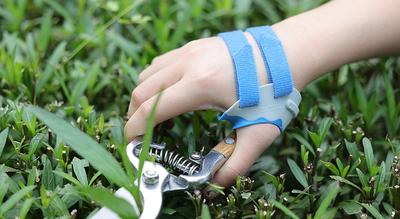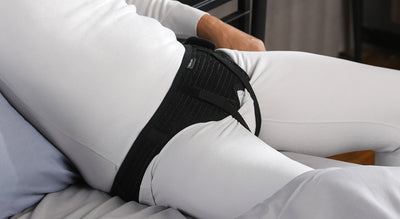Blog
How to Chose the Right Neck Brace?

Many people with cervical spondylosis will be advised by their doctor to use a neck brace to limit neck movement, stabilise the cervical spine and increase neck support to relieve and improve pressure within the intervertebral space and reduce irritation to tissues such as the spinal cord and nerve roots, thus avoiding aggravation and relieving symptoms such as neck pain, headaches and dizziness.
Orthopaedic specialists point out that a neck brace needs to be of the right type and size and worn strictly; otherwise, it will not be therapeutic. There are many brands of neck braces on the market today, with different materials and models. Which one is more suitable for you is troubling many patients and friends, so here is a guide on choosing a neck brace and the precautions to take when using one.
Orthopaedic specialists point out that a neck brace needs to be of the right type and size and worn strictly; otherwise, it will not be therapeutic. There are many brands of neck braces on the market today, with different materials and models. Which one is more suitable for you is troubling many patients and friends, so here is a guide on choosing a neck brace and the precautions to take when using one.
Which type is better?
There are currently four types of neck brace on the market: polymer neck brace, adjustable neck brace, inflatable neck brace and sponge neck brace. All four neck braces have advantages and disadvantages, so how do you choose?
The first choice is the polymer neck brace. This kind of neck brace has a certain traction effect and good support, fixed firmly but a little less breathable; you need to put a towel inside to keep the skin of the neck clean and dry.
Option 2: Adjustable medical neck brace. This neck brace is adjustable in height, has better breathability than polymer medical neck braces, and is easy to wear but slightly less strong in support and fixation.
An inflatable medical neck brace, sponge medical neck brace. In an inflatable medical neck brace, the amount of inflation can be determined according to the size of each person’s neck, use and condition. Still, the breathability is poor, and the support and fixation strength will change with the amount of inflation, thus affecting the support and fixation of the neck. Therefore, a sponge medical neck brace, which is comfortable to wear but has poor support and fixation strength and is difficult to maintain the cervical curve, is recommended.
How do I choose a neck brace model?
Different patients need to wear different types of neck braces. Before choosing one, measure your neck height and neck circumference and choose according to your neck height and girth.
Neck height: the vertical distance from the angle of the jaw to the supraclavicular fossa. This measurement should correspond to the height of the neck brace. Try the smaller model first if the patient’s measurement falls between two consecutive model values.
Neck circumference: the maximum circumference of the neck; this measurement should correspond to the neck circumference.
Once chosen, the patient should also wear the brace themselves and feel comfortable that it is the right one.
Wearing a neck brace should also be noted as follows!
When using a cervical brace, it is advisable to fix the cervical vertebrae in a slightly forward-flexed position, which is conducive to resetting the cervical vertebrae. At the same time, it can increase the anterior and posterior diameter of the cervical spinal canal and intervertebral foramen, reducing the compression and stimulation of the spinal cord and nerve roots.
2. when using, pay attention to the appropriate degree of tightness; too loose and too tight can not achieve the role of protection and fixed neck, in order not to cause obvious discomfort is better.
3. It is generally recommended to use it daily and remove it when resting. Long-term use is likely to cause disuse atrophy of the neck muscles, resulting in weakness of the neck muscles, stiffness of the neck and restricted movement, and may even produce dependence due to long-term use, which is detrimental to the stability of the cervical spine. Therefore, it should not be worn for too long; generally, 1-3 months can be used to remove it promptly after the symptoms are gradually reduced; if you do not know when to remove it, be sure to consult a doctor.
4. for patients with mild symptoms of cervical spondylosis, after use, if the symptoms are significantly relieved, you can gradually change from continuous use to intermittent use, only when you go out in the car or do certain activities; other times can not be used, but also pay attention to the functional exercises of the neck muscles, the combination of movement and static, to reduce the atrophy of the neck muscles, such as conscious chin collection and do gentle neck exercise movements, rice exercises, etc.
5. If you have any uncomfortable symptoms during use, you should seek professional medical advice and adjustment in time.
6. The use of a cervical brace is only one of the supplementary treatments for cervical spondylosis and cannot replace other treatments. However, it can be combined with oral, cervical rehabilitation and infrared irradiation to improve the therapeutic effect.
7. A small towel can be placed on the inner surface of the neck brace during use to keep the skin of the neck clean and dry. The small towel should be changed daily to prevent skin allergies and pressure sores.






